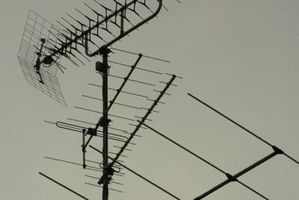Products Category
- FM Transmitter
- 0-50w 50w-1000w 2kw-10kw 10kw+
- TV Transmitter
- 0-50w 50-1kw 2kw-10kw
- FM Antenna
- TV Antenna
- Antenna Accessory
- Cable Connector Power Splitter Dummy Load
- RF Transistor
- Power Supply
- Audio Equipments
- DTV Front End Equipment
- Link System
- STL system Microwave Link system
- FM Radio
- Power Meter
- Other Products
- Special for Coronavirus
Products Tags
Fmuser Sites
- es.fmuser.net
- it.fmuser.net
- fr.fmuser.net
- de.fmuser.net
- af.fmuser.net ->Afrikaans
- sq.fmuser.net ->Albanian
- ar.fmuser.net ->Arabic
- hy.fmuser.net ->Armenian
- az.fmuser.net ->Azerbaijani
- eu.fmuser.net ->Basque
- be.fmuser.net ->Belarusian
- bg.fmuser.net ->Bulgarian
- ca.fmuser.net ->Catalan
- zh-CN.fmuser.net ->Chinese (Simplified)
- zh-TW.fmuser.net ->Chinese (Traditional)
- hr.fmuser.net ->Croatian
- cs.fmuser.net ->Czech
- da.fmuser.net ->Danish
- nl.fmuser.net ->Dutch
- et.fmuser.net ->Estonian
- tl.fmuser.net ->Filipino
- fi.fmuser.net ->Finnish
- fr.fmuser.net ->French
- gl.fmuser.net ->Galician
- ka.fmuser.net ->Georgian
- de.fmuser.net ->German
- el.fmuser.net ->Greek
- ht.fmuser.net ->Haitian Creole
- iw.fmuser.net ->Hebrew
- hi.fmuser.net ->Hindi
- hu.fmuser.net ->Hungarian
- is.fmuser.net ->Icelandic
- id.fmuser.net ->Indonesian
- ga.fmuser.net ->Irish
- it.fmuser.net ->Italian
- ja.fmuser.net ->Japanese
- ko.fmuser.net ->Korean
- lv.fmuser.net ->Latvian
- lt.fmuser.net ->Lithuanian
- mk.fmuser.net ->Macedonian
- ms.fmuser.net ->Malay
- mt.fmuser.net ->Maltese
- no.fmuser.net ->Norwegian
- fa.fmuser.net ->Persian
- pl.fmuser.net ->Polish
- pt.fmuser.net ->Portuguese
- ro.fmuser.net ->Romanian
- ru.fmuser.net ->Russian
- sr.fmuser.net ->Serbian
- sk.fmuser.net ->Slovak
- sl.fmuser.net ->Slovenian
- es.fmuser.net ->Spanish
- sw.fmuser.net ->Swahili
- sv.fmuser.net ->Swedish
- th.fmuser.net ->Thai
- tr.fmuser.net ->Turkish
- uk.fmuser.net ->Ukrainian
- ur.fmuser.net ->Urdu
- vi.fmuser.net ->Vietnamese
- cy.fmuser.net ->Welsh
- yi.fmuser.net ->Yiddish
RG5 Vs. RG6 Coaxial

Many types of coaxial cables carry electronic signals between amateur radio components and to and from antennas. They use a single center conductor surrounded by an insulating material, a braided or foil shield and an outer protective covering. Important selection specifications include the impedance, the frequency response and various environmental considerations. Different manufacturers produce varieties of RG5 and RG6 with fixed and variable options.
Impedance
The most important difference between RG5 and RG6 is the impedance or the amount of opposition the cable presents to a signal at its source. Expressed in "Z" or ohms, it depends on the size of the center conductor, the type of shield and the thickness and material used for the insulation between the two. To meet the specifications of RG5, manufactures must use a combination of design features that results in an impedance of 50 ohms. For RG6, the impedance must be 75 ohms.
Frequency Response
Frequency response, which also depends on design characteristics, tells the amount of loss a coaxial cable has at a given distance for different frequencies. For all coaxial cables, loss increases with frequency, and response characteristics vary from one manufacturer to another. Neither RG5 nor RG6 would be considered either high- or low-loss cable. Both carry signals from direct current (DC) from 0 hertz up to 3,000 MHz with a loss per 100 feet of between 3 and 7 dB at 400 MHz and between 9 and 12 dB at 3,000 MHz. Manufacturers' specification sheets show exact frequency response statistics.
General Usage
Most circuits and components that use coaxial cable for amateur radio have an impedance of 75 ohms. Unless your equipment specifically states 50-ohm impedance, you should use RG6. Where equipment specifies 50 ohms, use RG5. A cable impedance mismatch may create the appearance of better signal performance in isolated situations, but in these cases the mismatch probably creates signal degradation in areas not readily noticeable. For best results, always match the cable impedance to the equipment it connects.
RG58 and RG59
Some users may confuse the performance characteristics of RG5 with RG58 and RG6 with RG59. Both RG58 and RG59 only operate at frequencies up to 1,000 MHz with more loss than RG5 and RG6 at equal frequencies. The major difference is that RG58 has 50 ohms of impedance and RG59 has 75 ohms. If you are using either with signals between 1,000 and 3,000 MHz or your cable run has excessive loss at frequencies below 1,000 MHz, try replacing RG58 with RG5 for better performance for 50-ohm circuits and replace RG59 with RG6 for 75-ohm circuits.

